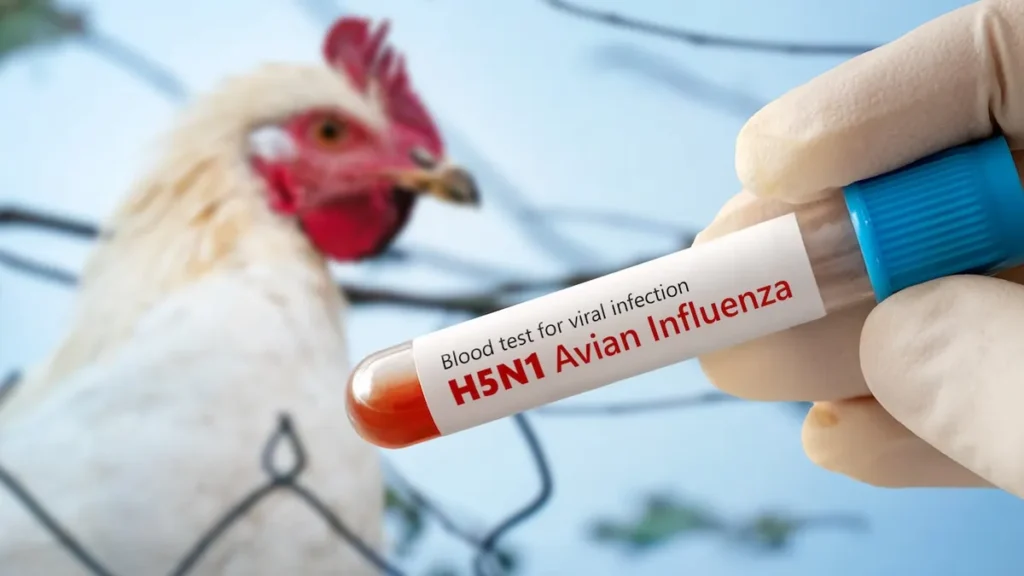Last winter, I noticed my dogs acting strangely after playing near a group of wild birds. Worried, I started researching whether dogs can catch Bird flu—and what I found was surprising!
Yes, dogs can catch bird flu (avian influenza), but it’s rare. In most cases, infection happens when a dog comes into direct contact with an infected bird especially by eating or sniffing a sick or dead bird.
While the risk is low, it’s still important to monitor your dog if they are exposed to wild birds. From how bird flu spreads to dogs to the warning signs every pet owner should know, we’ll cover everything you need to keep your furry friend safe.
What Is Bird Flu? – If You Don’t Know!
Bird flu, or avian influenza (H5N1, H5N8, and other strains), is a viral disease that mainly affects birds but can sometimes spread to mammals, including dogs.

So that’s why, The virus spreads through direct contact with infected birds, contaminated environments, or infected animal products like raw meat or unpasteurized milk.
Are Dogs at Risk for Bird Flu? – Protect Your Pets!
Dogs are not highly vulnerable, but they can get bird flu if they have direct contact with infected birds or consume infected bird products. Pet dogs roaming in areas with outbreaks are at a higher risk, so owners should be cautious.
What Causes Bird Flu In Pets And Other Animals?
Ingestion of Infected Birds or Poultry:
In My Opinion, Bird flu viruses can spread when animals consume infected birds or poultry, especially if the animals eat dead birds or contaminated meat.
Contact with Infected Environments:
Apart From This, Pets and wildlife may contract the virus by entering contaminated areas, such as places where infected birds have been present or areas with bird droppings.
Infected Wild Animals:
Occasionally, wild animals like foxes, bears, or skunks can become infected by consuming dead or sick birds. These animals might pass the virus on to domestic pets or other animals they come into contact with.
Zoo Animals and Exotic Species:
Often, Zoo animals, such as tigers and leopards, have also been known to contract the virus if they come into contact with infected birds or their droppings.
Other Mammals, Including Stray or Domestic Cats and Dogs
Last but not the least, Pets like cats and dogs can catch bird flu if they eat infected birds, drink contaminated water, or live in areas with a high concentration of infected wildlife.
Also Check: What To Avoid After Flu Shot – 2025 Vaccination Tips!
Symptoms of Bird Flu in Dogs – Stay Alert!
1. High Temperature (Fever)
In the first place, Fever is one of the first signs of infection. If your dog feels unusually hot or has a body temperature over 103°F (39.4°C), this could be a sign of illness.
2. Difficulty Breathing (Wheezing, Coughing)
Moreover, Dogs infected with bird flu may wheeze, cough, or have labored breathing. If your dog seems short of breath or exhibits irregular respiratory patterns, this could be a sign of a respiratory infection.
3. Fatigue or Weakness
On the other hand, Bird flu can cause your dog to become unusually tired or weak. If your dog is more lethargic than usual and unwilling to play or move around, it could indicate the onset of infection.
4. Loss of Coordination
In some cases, the virus can affect your dog’s motor skills, leading to difficulty walking or loss of coordination. If your dog stumbles or has trouble keeping balance, this could be a sign of a severe infection.
5. Loss of Appetite
Unfortunately, A sudden loss of appetite is a common symptom. If your dog refuses to eat, this is often a clear indicator that something is wrong.
6. Vomiting or Diarrhea
Lastly, In addition to respiratory symptoms, some dogs may experience vomiting or diarrhea. If your dog is having digestive issues along with other symptoms, consult a vet right away.
When To Contact A Vet!
If you notice any of these symptoms in your dog, it’s important to contact a veterinarian immediately. Early diagnosis and treatment are crucial for recovery. Bird flu can be serious, so the sooner you get your pet checked, the better.
Did You Explore? Is It Too Late To Get A Flu Shot? – Don’t Wait Any Longer!
How to Prevent Bird Flu in Dogs – Protection!
While bird flu in dogs is rare, there are simple precautions you can take to reduce the risk. Here’s how to keep your dog safe:
1. Keep Dogs Away from Wild and Domestic Birds
Avoid areas where wild birds or domestic fowl gather, such as ponds, farms, and parks. Bird flu can spread when dogs come into contact with infected birds or their droppings. Keeping your dog away from these areas reduces exposure.
2. Don’t Let Dogs Eat Dead Birds
Dogs can contract bird flu by eating dead birds that carry the virus. Never allow your dog to pick up or consume any dead animal they may find outdoors. This is one of the primary ways dogs become infected with bird flu.

3. Keep Your Dog Vaccinated
Ensure your dog’s vaccinations are up-to-date to protect them from a range of diseases, even though there isn’t a specific bird flu vaccine for dogs. Healthy and vaccinated dogs have stronger immune systems, helping them better defend against illnesses like bird flu.
4. Monitor Local Outbreaks
Stay informed about local bird flu outbreaks in your area. Check for updates on animal health websites or avian flu hotlines to ensure you’re aware of any potential risks nearby.
5. Control Your Dog on Walks
When walking your dog, always keep them on a leash to prevent them from coming into contact with birds, dead animals, or contaminated environments. This helps control where your dog goes and limits exposure to possible infection sources.
What To Do If Your Dog Is Infected!
- Contact your vet immediately for the proper treatment.
- Monitor your own health for flu-like symptoms as the virus can sometimes spread to humans.
- Report sick or dead birds in your area to the avian influenza hotline for proper handling.
Get The Knowledge: dr pepper 8-fluid ounce glass bottles 6-pack
Final Thoughts:
While bird flu in dogs is rare, it’s always better to be cautious. By keeping your dog away from wild birds, avoiding raw meat, and staying informed about outbreaks, you can help protect them from potential infection.

